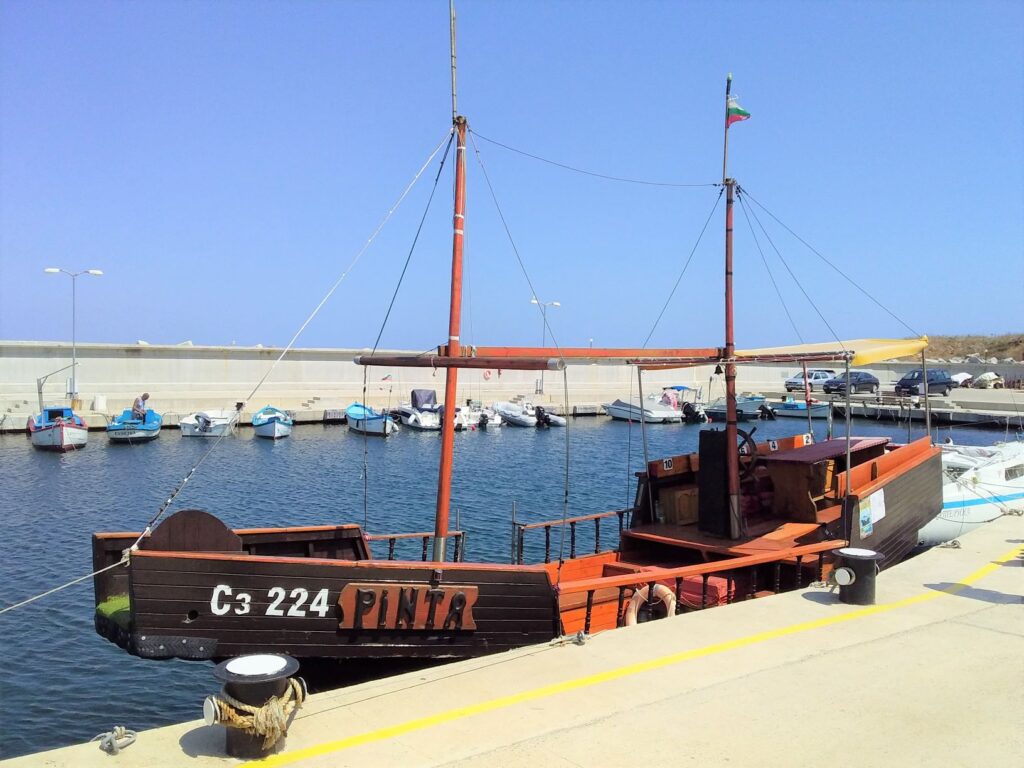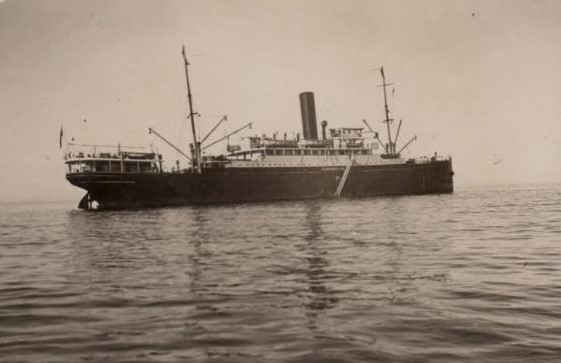Wrecked and scuttled in Bulgaria’s Black Sea
We jammed the cars full of diving gear, and squeezed in for the hour’s drive south from Nessebar on Bulgaria’s Black Sea coast. For once I was usurped for the front seat; a massive Latvian bloke who had 10cm of height over me and about 25kg of weight was rightly granted the extra legroom. The Black Sea has a long maritime history, and we were off to spend the day diving shipwrecks in Sozopol.
After arriving at Sozopol’s little harbour, we pulled up beside a boat that was clearly designed with the summer party crowd in mind. It was like a mini pirate galleon, and it would have seemed more appropriate to be loading cartons of beer and party food on board than dive gear. Our dive boat/party ship for the day was appropriately named Pinta which means ‘Pint’ in Bulgarian.


We were an international group of five blokes from Lativa, Bulgaria, Luxembourg, Portugal and Australia. With all the gear on board we headed out of the harbour and into the small swell. The Pinta showed the handling characteristics of a boat built for form not function, and rolled around like a drunk on payday. It was bad enough that the big Latvian, a maritime engineer by trade, started to feel decidedly off-colour.
‘Scrub the decks you scurvy dogs!’
Our first dive was on the 22.5 metre long Pioneer, a Bulgarian fishing vessel scuttled by enthusiasts in 17m of water to create a dive site. To be honest, as a history fan, ships that are intentionally sunk don’t have the same aura and interest for me as those lost through misfortune. However despite my preconceived ideas, I really enjoyed diving on the Pioneer.
There was a lot to see, and it was fun to squeeze through the cramped interior of the old fishing boat.
There’s something about the wheel of a sunken ship (or the wheelhouse/bridge itself, as most ships’ wheels have long been souvenired); maybe it’s the human connection, that the skipper stood on that very spot, hands on the wheel, in command of the vessel. Or perhaps, with regards to a maritime tragedy, it is that the captain fought here in vain to control a vessel whose fate was sealed.
After an enjoyable time exploring the Pioneer, we headed off for 30 minutes of rolling on the good ship Pinta to our second dive site. Below us lay the remains of the steamship Compidoglio. On 23rd February 1931, the Italian vessel S.S. Compidoglio was en route from Trieste in Italy bound for Odessa, Ukraine.

The 105 metre long vessel was carrying passengers and cargo, when a navigational error lead to her wrecking near Cape Akin north-west of Sozopol. Unsuccessful salvage efforts were made, and in late 1931 heavy storms broke up the remainder of the ship. Maritime legend has it that it’s bad luck to change the name of a boat. Perhaps that’s true in the case of Compidoglio, which was launched as S.S. Karlsbad in 1909.

Suiting up again, we followed the dive leader through the first metres of murky green water until we reached the bottom, and better visibility, about 16 metres down. After making our way for a while along the shell strewn, rocky sea bed, we came upon the skeleton of the Complidoglio.
Swimming the length of the boat from stern to bow gave an appreciation of the size of the steamer.
Little of the vertical structure of the ship can still be seen, and marine life is claiming the remains that have lain here for nearly 90 years.
We surfaced after about 40 minutes, and rolled back to Sozopol harbour on the Pinta, chatting about what we had seen on the wrecks. Diving is a certainly a great way to meet people, and as a solo traveler I always enjoy the chance to hang out with people who share a common interest.
I had a great day diving on just two of the many sunken ships lying off the Bulgarian coast. The dark waters of the Black Sea have a long history of seafaring, and hold the wrecks to prove it. If you like wreck diving, you might want to include Bulgaria on your travel list.
If you liked this post, you may also like Diving the HMS Lundy and HMS Louis; Diving the S.S. Thistlegorm, Part II
Leave a Reply